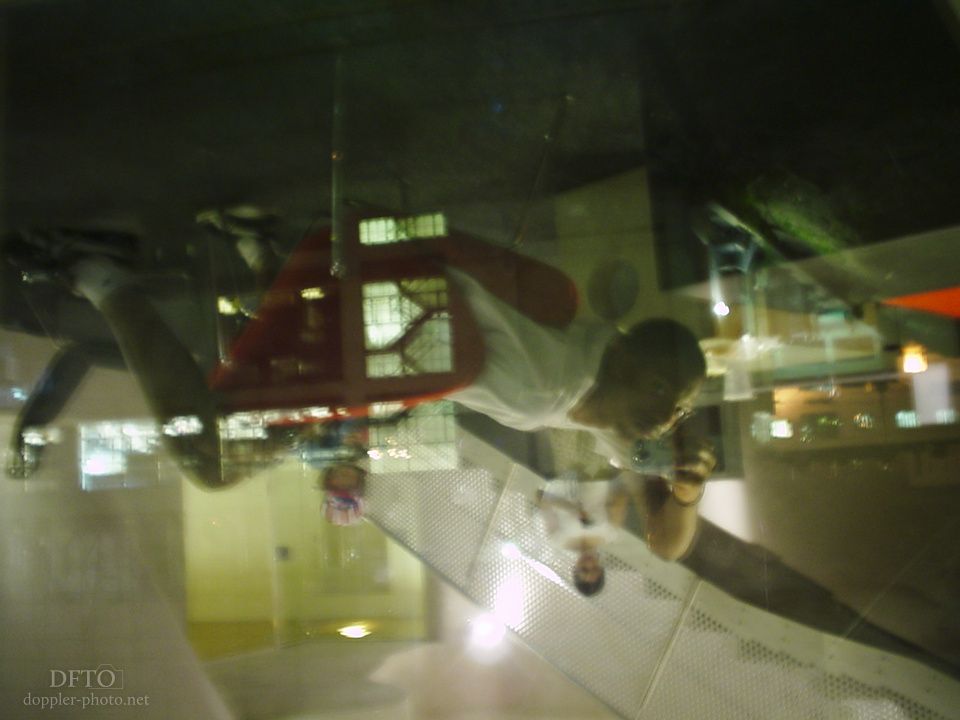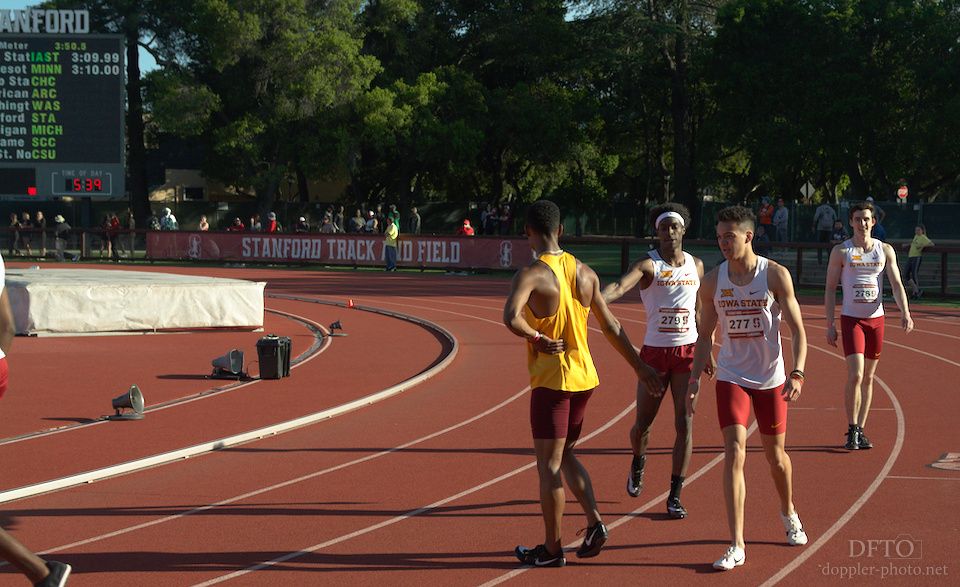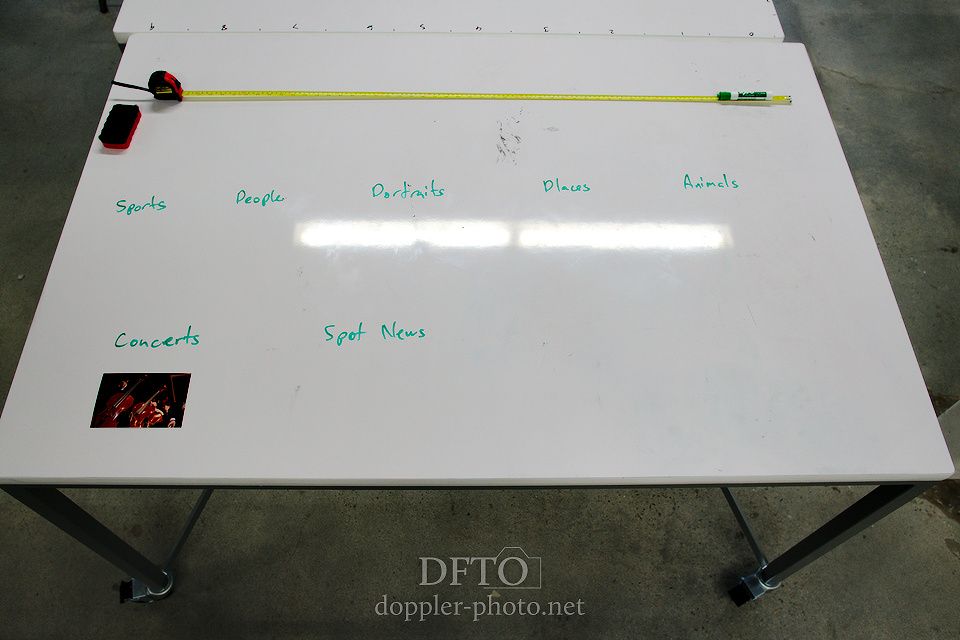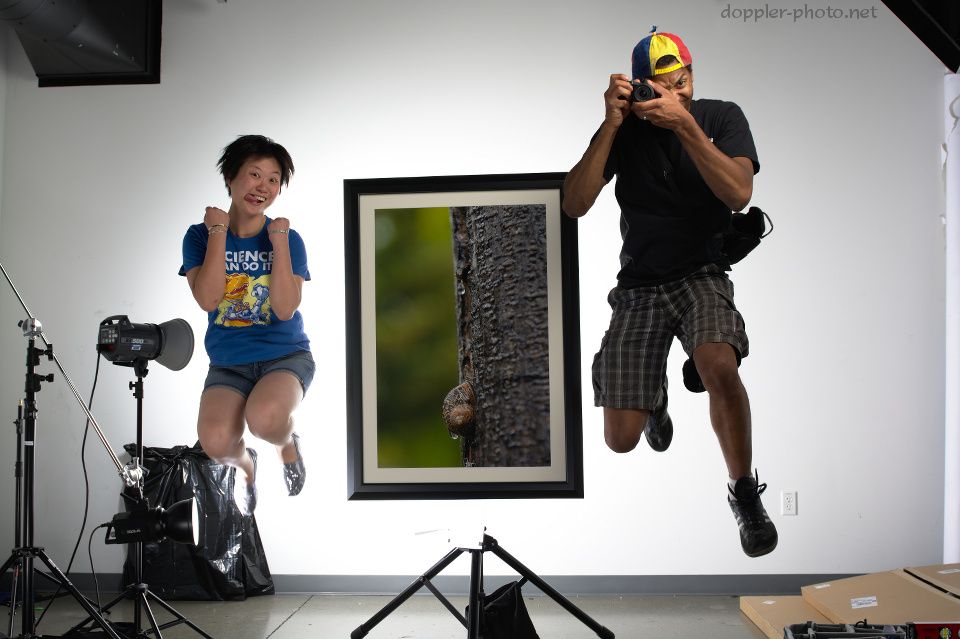
There have been a great many photographers who loved being behind the camera, but who were hesitant to have their own pictures taken. For whatever reason, I have never been that way. And while talking to a friend recently, it occurred to me that looking back on my history of self-portraits, and the cameras that took them, might reveal something about how my style and perspective have changed over the years. None of these images is cropped; they are all complete frames.
I consider the real start of my photographic journey to be late 2002, when I was gifted a Sony DSC-P31 for Christmas. The settings were all auto, there was no usable zoom, and there were no real manual controls.
That was a generation before selfies, front-facing cameras, and articulating screens, and it took me a few months before I finally turned the lens on myself, and then a few more before I produced this shot. This was one of the first self-portraits that showed the seeds of how I would go on to capture myself in the 16 years since.
I think that during my earlier years, the self-portraits that I took were mainly incidental — I happened to be a convenient subject to experiment on — but I don't think I had any real documentary intent for them.
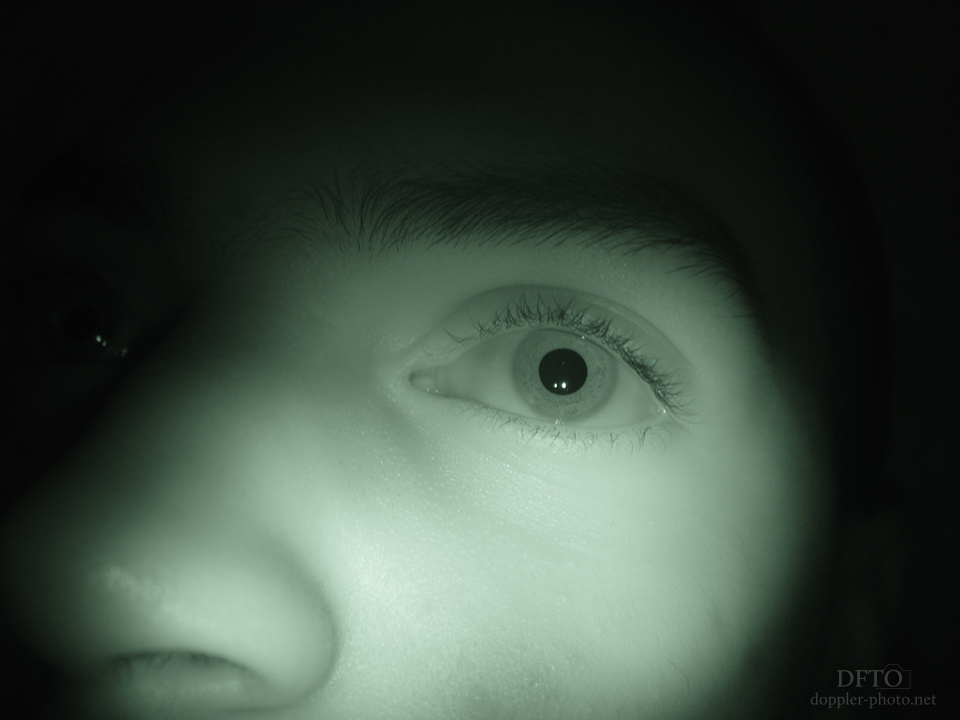
Even so, I think I've always used photography as a way to capture and to express the things that make me curious about the world. In late 2003, I upgraded to my second camera, a Sony DSC-F717. One of its neat features was a "night mode" that would use two infrared LEDs to dimly illuminate the scene being captured. One evening, I sat in our dark garage and just played with that mode, eventually coming up with this shot.
I recall finding it pretty mysterious to see a well-exposed picture where my pupil was fairly dilated, and the details in my iris were pretty sharp. Thinking back, this feels a lot more like an image that I might have found in some issue of Scientific American, rather than an image that I'd have captured in my own home.
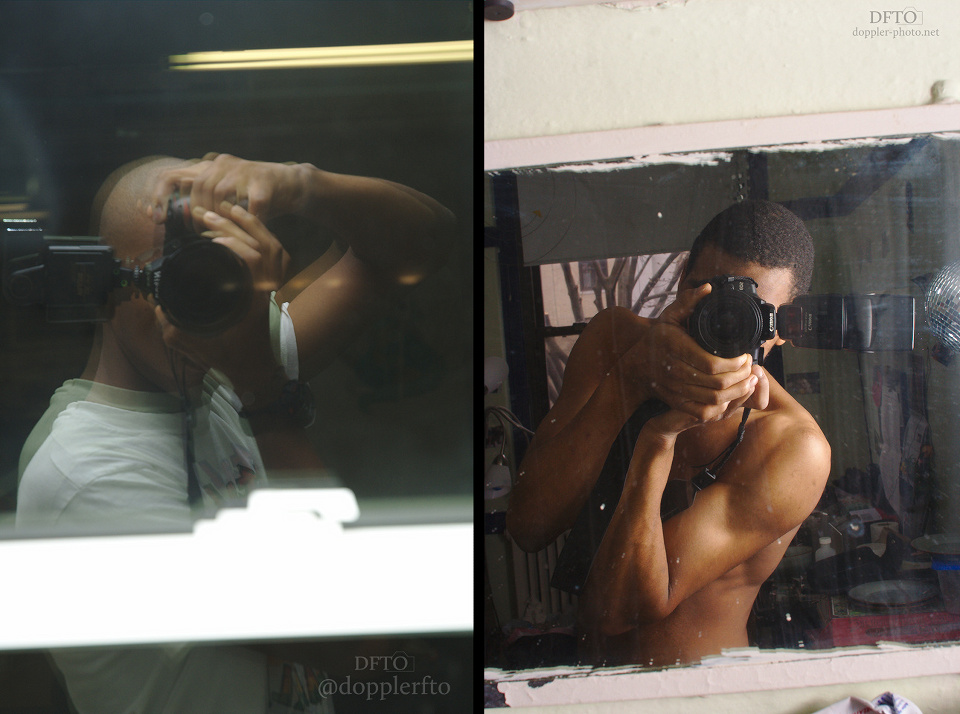
By 2004, I had upgraded to a Nikon D70 — my first DSLR — and I was teaching myself how to take photos with a flash (Sunpak 383-auto, for the curious). The photo on the left was, again, an incidental picture, but I think it started to show inklings of how I would start to notice reflections in the years to come. I think that was how I started to take self-portraits with some level of intent.
The picture on the right is two years later, in 2006. I was pretty comfortable with flash, and was messing around with a friend's Canon camera and flash, while wondering whether I should buy a Nikon flash that would integrate better with my own camera. My self-portraits also started to include more composition and artistic design. I don't know whether it was intentional at the time, but it's pretty clear that I was starting to include aspects of my environment in the pictures — that's another pattern that has become a fairly consistent aspect of my style.

In 2008, I upgraded from the D70 (then 4 years old) to a D300, which featured vastly-improved autofocus. I had also dropped and broken my flash (oopsie!), but then didn't replace it with anything — my transition from mostly-flash to only-available-light was essentially an accident that stuck.
The D300's autofocus system helped me stick this no-look shot, which I feel illustrates my gradual transition from just showing what I looked like, to also showing bits of my personality. It was intentional that I took this photo while I had a funny green glittery thing stuck to my nose. That is, this was a transition towards telling stories about myself, and showing myself in the context of the world around me.
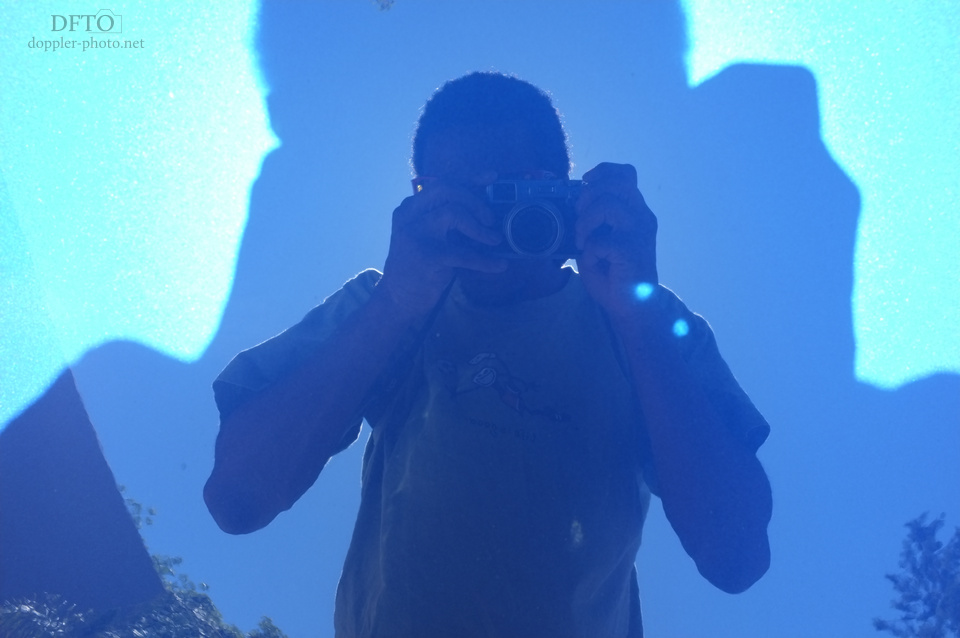
Like many photographers in that era, I was immediately smitten when the Fuji X100 was announced in 2010. It was easier to carry than a full DSLR, and had a delightful lens that was just the right size, speed, and focal length for how I wanted to use it. I had mine in hand by 2011.
This picture shows a continuation, in one image, of so many themes from before. I randomly noticed this combination shadow/reflection in the hood of my car one day, and immediately decided to photograph it. Then I took the time to capture it in a way that I found artistically satisfying: I framed it (perhaps unconsciously) with a few branches around the borders, which give a sense of context, and also tried to place the shadow to make it something of a conundrum — too perfect to be a coincidence, but abstract enough to potentially pull others into my curiosity about the world.
I think this illustrates a transition towards expressing my own experience of the world in a way that was nuanced and that incorporated details that lurked beneath the surface. It was a self-portrait that takes time to appreciate.
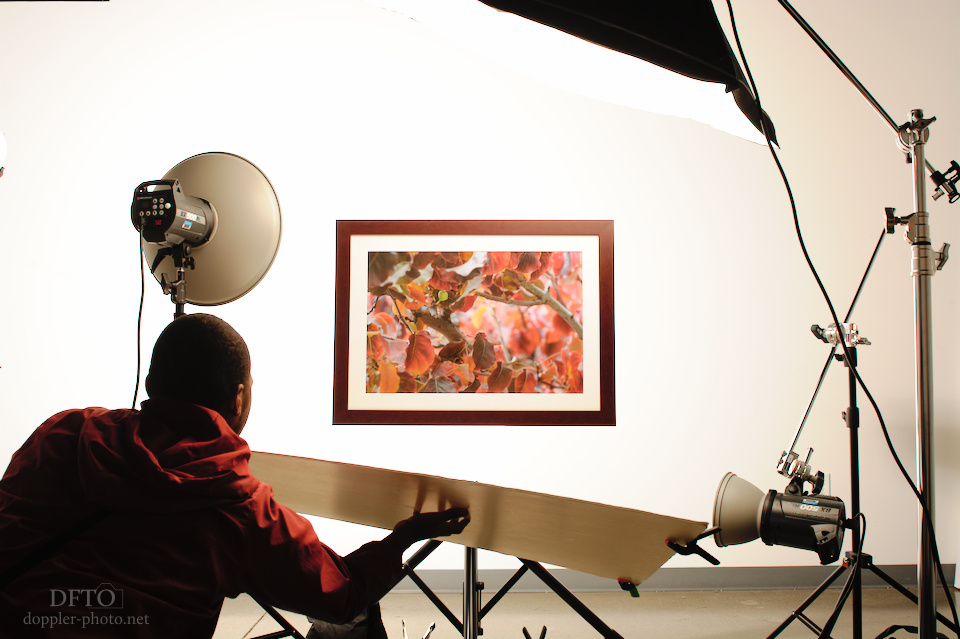
And so we jump from the conundrum to the magic trick. I designed an apparatus to hold a framed print so that, in a photograph, it would appear to float in midair. I was pretty proud of how well this worked, so I set up and shot this self-portrait to show that I was making magic, and that the magic trick was still convincing even when I showed glimpses of how it was arranged. Whereas the subject of my earlier self portraits was just me, I feel like the subject of this one is my creativity. It's my desire to solve problems in novel ways, and the fact that being in the middle of those solutions is how I want to be seen.
It's also interesting that this is the first image in the set that cuts the direct connection between myself and the camera. For the other images, it's pretty clear that I am, or am likely, the photographer. But for this one, that aspect of the picture is somewhat hidden. You'd have to know the story to know that I shot this off a self-timer. The camera was a Nikon D7100 that I got in 2013.
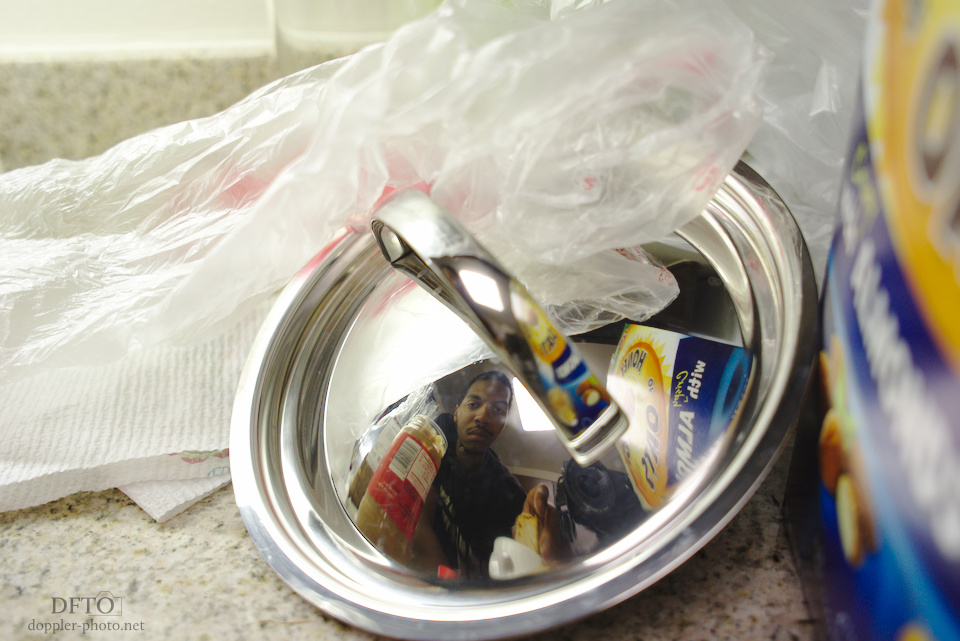
In 2013, I also replaced my X100 with a Sony NEX-7. Additionally, by that point I was clearly using self-portraiture as an intentional way to document not only who I was, but also what it was like to be me. What it was like to live my life. To make the small, every-day decisions in the way that I made them.
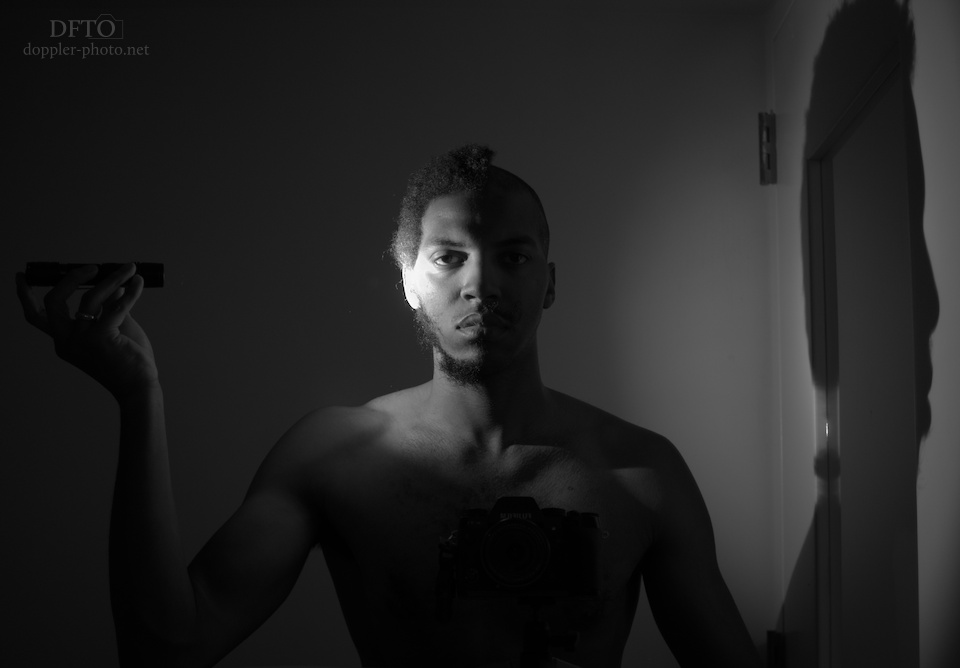
By 2014, I had replaced that NEX-7 with a Fuji X-T1. By that point, "environmental portrait" was a clear part of my photographic vocabulary, and was an intentional aspect of how I tried to photograph myself.
I visited Manhattan, NY in 2016 and shot this image in a hotel bathroom. I recall wanting to design and capture a photo that would show what I looked like, who I was, and what kinds of photographs I was capable of taking. I wanted it to illustrate that I was creative, that I was a little crazy, and that I was a photographer with a fair bit of experience. That I had the skill to capture photos with a delicate touch.
I still love this photo.
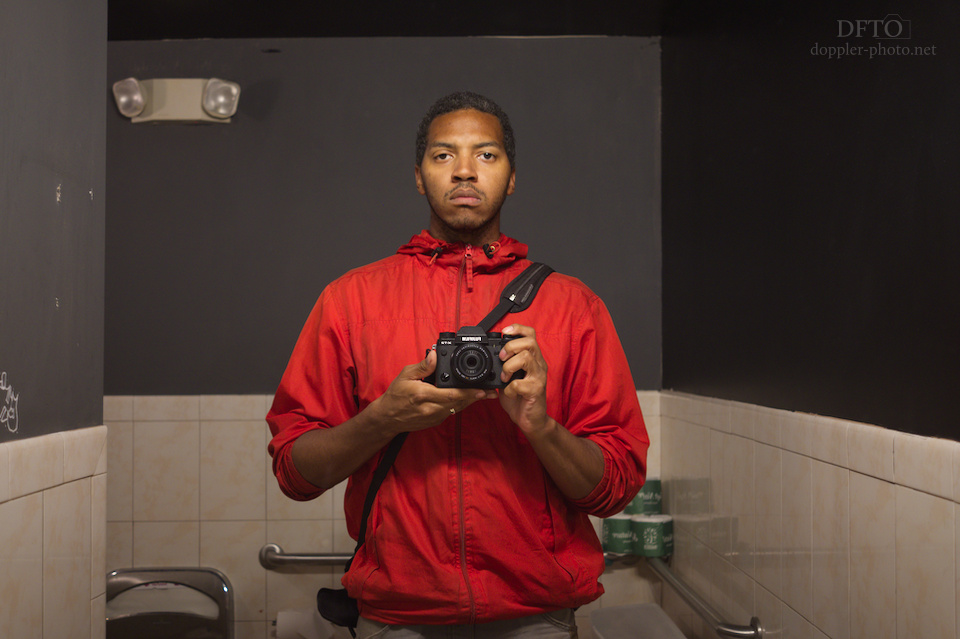
And finally, the present. The camera is a Fuji X-T2 that I got a few months ago.
I don't know what kind of transition I'm in the middle of right now, but hopefully I'll look back in a few years and see this as a milestone as well.

